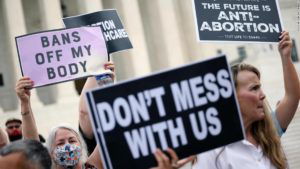
Brooks Acordia Patent Attorney Explains Business Method Patents
Jan 31, 2014
Los Angeles, CA (Law Firm Newswire) January 31, 2014 – Business method patents have been around for a long time, but they have only recently been issued in large numbers.
“From 1997 to 2007, the number of business method patents issued by the United States Patent and Trademark Office (USPTO) increased from 1,000 to 11,000. Most of those patents were in the areas of finance and computer technology,” said Los Angeles patent attorney Jim Dawson.
Some intellectual property experts are skeptical of the appropriateness of patenting methods of business. But for now, they represent important assets for many entities and are patentable under the same standards as other proposals.
However, recent court cases have cast their future in doubt.
In the 2008 case In re Bilski, the U.S. Court of Appeals for the Federal Circuit ruled that the sole test to determine the patentability of a business method is that it must either be tied to a particular machine or apparatus, or it must transform matter into a different state or thing. This requirement is commonly called the “machine-or-transformation test.” The ruling created great concern among technology companies because, if strictly applied, it would cast doubt on many business method patents granted by the USPTO up to that point.
But in 2010, the Supreme Court unanimously ruled in Bilski v. Kappos that the machine-or-transformation test was not the sole test of patentability for business methods. The Court called the test one “useful and important clue or investigative tool.” However, the court did not offer any further guidance on other valid standards for evaluation.
Today, business method patents continue to face stiff legal challenges. On December 6, 2013, the U.S. Supreme Court agreed to hear an appeal in CLS Bank v. Alice Corp. The U.S. Court of Appeals for the Federal Circuit already dealt a severe blow to Alice, operator of an online financial marketplace, by ruling the company’s claims ineligible in a crucial business method patent. Judge Kimberly Moore, dissenting, said the ruling would mean “the death of hundreds of thousands of patents.” Judge Pauline Newman said the case “could do more damage to the patent system” than any other case in history.
“When the Supreme Court rules, we may get better guidance in terms of what qualifications a business method patent must meet,” Dawson added. “Until then, the USPTO offers guidance for would-be inventors, listing as “factors weighing toward eligibility” for business methods: recitation of a machine or transformation; whether the claim is directed toward applying a law of nature; and whether the claim is more than a mere statement of a concept.”
Learn more at http://www.brooksacordia.com/
Brooks Acordia IP Law, P.C.
1445 E. Los Angeles Ave. #108
Simi Valley, CA 93065-2827
Phone: (805) 579-2500
Fax: (805) 584-6427
- Speedy Patent Prosecution, Part 2: Accelerated Examination
The previous post in this series covered Track One prioritized examination, a USPTO program with a substantial fee, but no additional preparation required for the application. This post details a very different method of speedy prosecution: the Accelerated Examination Program.<br />
Like Track One, the Accelerated Examination Program has a stated goal of completing examination within 12 months of filing. But the similarities end there. Accelerated Examination has only a small fee, but a significant preparatory burden that entails its own … - Speedy Patent Prosecution, Part 1: Track One Prioritized Examination
The USPTO has a number of different programs to allow for speedier prosecution of patent applications. Each expedited prosecution path has their own qualifications, advantages, and disadvantages. This series of posts will cover some of these programs in detail. First up is Track One.<br />
USPTO’s Track One prioritized examination is a special program for speedy examination of nonprovisional utility and plant patent applications. To be eligible, applications must have no more than four independent claims and 30 total claims, and … - USPTO announces revised fee schedule effective January 1, 2014
The USPTO has announced a revised fee schedule that reduces patent issue fees, reduces Patent Cooperation Treaty (PCT) fees*, and eliminates electronically filed assignment fees and publication fees. These fees will go into effect on January 1, 2014.<br />
For large entities, the issue fees for a utility patent will be reduced by $1,120. The utility issue fee will be lowered from $1,780 to $960, and the $300 publication fee will be eliminated.<br />
For small entities, the issue fees for a …


